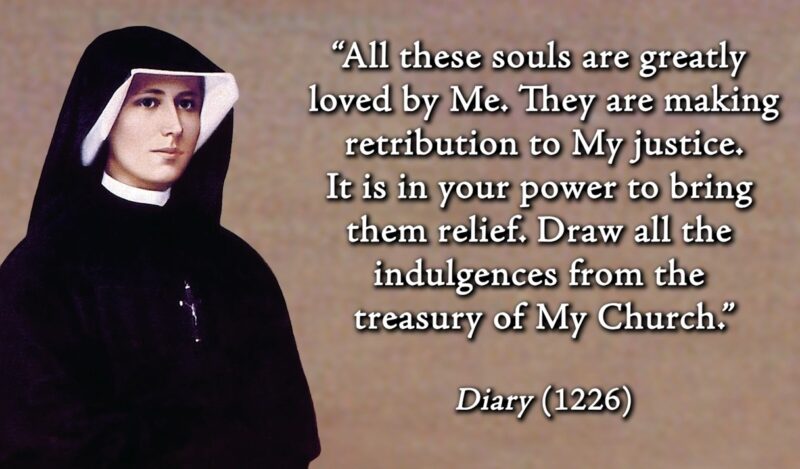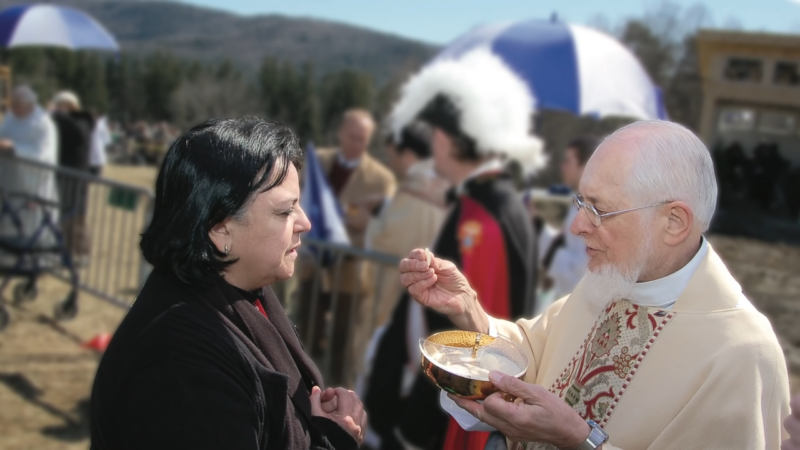In the realm of religious beliefs and practices, few concepts have stirred as much curiosity and discussion as the notion of a plenary indulgence. Rooted in Catholic theology and tradition, the concept of a plenary indulgence holds a distinct place in the minds of the faithful.
While the term itself might evoke a sense of mystery, its understanding is crucial for a comprehensive comprehension of the Catholic faith. In this educational article, we shall delve into the intricacies of a plenary indulgence, exploring its historical evolution, theological underpinnings, and its relevance in contemporary times.
Defining The Concept

A plenary indulgence is a concept within Catholic theology that relates to the remission of the temporal punishment due to sins that have already been forgiven. To grasp the essence of this concept, it’s vital to understand the distinction between temporal punishment and eternal punishment within the context of Catholicism. According to Catholic doctrine, sins not only damage the soul’s relationship with God but also have a temporal aspect that affects the sinner’s life on earth.
Temporal punishment is often likened to the residual consequences of wrongdoing that linger even after the guilt of sin has been absolved through the sacrament of confession. This punishment, rooted in the principle of divine justice, is seen as a means of purification and restoration. Here, plenary indulgence steps in as a powerful means to alleviate or entirely eliminate this temporal punishment.
Historical Evolution

The concept of indulgences, including plenary indulgences, traces its roots back to the early days of Christianity. The early Church recognized the importance of penance and acts of restitution for sins committed. This practice aligned with the belief in God’s mercy and the necessity of reconciliation. Over time, as the Church developed its theology and practice, the idea of indulgences gained more structured significance.
The medieval period marked a significant juncture in the development of indulgences, with the practice becoming more formalized. Indulgences were often associated with acts of piety, pilgrimage, or charitable deeds. The Catholic Church began to assign specific works or prayers that, when undertaken with a genuine contrite heart, would result in the remission of temporal punishment. The faithful believed that indulgences could shorten the time a soul would spend in purgatory, a concept closely tied to the idea of temporal punishment.
Theological Underpinnings ─ Understanding the Basis of Plenary Indulgences
At the heart of the concept of plenary indulgences lies a theological framework that intertwines divine justice, mercy, and the intercession of the Church. The Catholic Church believes that God’s justice demands reparation for sin, and this reparation is experienced through temporal punishment. However, God’s mercy also extends to providing avenues for this punishment to be alleviated or wiped away entirely.
The Church, as a spiritual authority, is believed to possess the power of binding and losing. This concept, rooted in the words of Jesus in the Gospel of Matthew (16:19), signifies the Church’s role in mediating divine grace and forgiveness. It is within this framework that indulgences, including plenary indulgences, find their place. The Church, through its authority, designates certain acts, prayers, or devotions that, when performed with sincere repentance, can lead to the remission of temporal punishment.
The Criteria

While the notion of a plenary indulgence might evoke thoughts of a “spiritual shortcut,” it is important to note that obtaining a plenary indulgence involves meeting specific criteria. The Catholic Church sets forth these conditions to ensure that the process remains sincere and meaningful.
- Sacramental Confession: To qualify for a plenary indulgence, an individual must have recently received the sacrament of confession. This requirement underscores the importance of genuine repentance and reconciliation with God before seeking the benefits of an indulgence.
- Eucharistic Communion: Participation in the celebration of the Eucharist, often referred to as Holy Communion, is another essential criterion. The act of receiving the body and blood of Christ signifies unity with the Church and strengthens the bond between the believer and God.
- Prayer for the Pope’s Intentions: The intention of the Pope is a crucial aspect of obtaining a plenary indulgence. This often involves reciting specific prayers as an expression of solidarity with the Church’s leadership and its broader mission.
- Detachment from Sin: A plenary indulgence requires the individual to be detached from all sin, even venial sin. This condition underscores the need for a sincere commitment to leading a life in accordance with God’s will.
- Performance of Indulgenced Act: Engaging in the specified act or devotion assigned for the indulgence is pivotal. This act could involve visiting a designated holy site, reciting certain prayers, or performing charitable deeds.
- Interior Disposition: Perhaps the most crucial criterion is an interior disposition of complete love for God and a resolve to turn away from sin. This genuine contrition is central to the efficacy of the indulgence.
Varied Avenues of Remission

Plenary indulgences offer a diverse range of avenues through which the faithful can seek remission of temporal punishment. These avenues reflect the multifaceted nature of Catholic spirituality and the Church’s recognition of different ways individuals can express their faith and devotion. Some of the common types of plenary indulgences include:
- Pilgrimages: Undertaking a pilgrimage to a designated holy site or shrine is a classic way of seeking a plenary indulgence. The act of physical journeying is often seen as symbolic of the spiritual journey towards God.
- Participation in Spiritual Exercises: Engaging in spiritual exercises, such as the Stations of the Cross, the Rosary, or the Divine Mercy Chaplet, with genuine devotion can lead to the remission of temporal punishment.
- Adoration of the Blessed Sacrament: Spending time in adoration before the Blessed Sacrament, which represents the real presence of Christ in the Eucharist, is another avenue for obtaining a plenary indulgence.
- Acts of Charity: Performing acts of charity and mercy, such as visiting the sick, feeding the hungry, or assisting the needy, can also lead to the remission of temporal punishment when done with a pure heart.
- Reading Scripture: Devoutly reading and meditating on Sacred Scripture can be a pathway to obtaining a plenary indulgence. This practice highlights the importance of engaging with the Word of God.
- Prayer for the Deceased: Praying for the souls of the faithful departed is an act of mercy and charity. Such prayers can lead to the remission of temporal punishment not only for oneself but also for the deceased.
Misconceptions and Clarifications
The concept of plenary indulgences has not been without its share of misconceptions and controversies. Throughout history, these misconceptions have sometimes led to misunderstandings and disagreements within the Church and beyond. Addressing these misconceptions is crucial for fostering a clearer understanding of the concept.
- “Buying” Indulgences: One of the most contributes to the spiritual growth and formation of individuals.
- Reflection on Sin and Redemption: The concept of indulgences invites believers to reflect on the nature of sin, its consequences, and the process of redemption. This reflection can foster a deeper understanding of one’s relationship with God and the need for continuous conversion.
- Acts of Mercy and Love: Many of the actions that lead to plenary indulgences involve acts of mercy, charity, and love. Engaging in these acts reminds individuals of their call to serve others, thereby contributing to the betterment of society and the alleviation of suffering.
- Unity with the Universal Church: The conditions for obtaining a plenary indulgence often include prayers for the intentions of the Pope and the Church. This practice underscores the sense of unity and solidarity with the broader Catholic community, regardless of geographical or cultural differences.

FAQs
What exactly is a plenary indulgence?
A plenary indulgence is a concept within Catholic theology that refers to the remission of the temporal punishment associated with sins that have already been forgiven through confession. It’s a way to alleviate or entirely eliminate the consequences of sin’s impact on an individual’s spiritual journey.
How does a plenary indulgence differ from forgiveness of sins?
While forgiveness of sins is granted through the sacrament of confession, a plenary indulgence addresses the temporal consequences of those sins. Forgiveness removes the guilt and eternal punishment, while indulgence focuses on the purification of temporal punishment that lingers even after forgiveness.
Do plenary indulgences “buy” forgiveness?
No, plenary indulgences cannot be bought. This is a common misconception. They are based on acts of sincere devotion, prayer, charity, and other practices that reflect genuine repentance. The Church assigns certain actions as a way to channel one’s contrition and commitment to spiritual growth.
Can anyone obtain a plenary indulgence?
Yes, anyone can strive to obtain a plenary indulgence, provided they meet the specific conditions set by the Catholic Church. These conditions typically include sacramental confession, participation in the Eucharist, prayer for the Pope’s intentions, detachment from sin, the performance of indulgenced acts, and a genuine interior disposition.
How often can one seek a plenary indulgence?
A plenary indulgence can be obtained once a day, except in the case of imminent death, where the conditions may be fulfilled over several days. The intention should always be to grow spiritually and not to seek indulgences merely for accumulation.
Are plenary indulgences relevant in modern times?
Yes, plenary indulgences remain relevant as they encourage acts of piety, charity, and devotion, fostering spiritual growth and unity with the Church. In today’s fast-paced world, these practices provide opportunities for self-reflection, repentance, and connection with the divine.
Conclusion
In the tapestry of Catholic theology, the concept of a plenary indulgence is a thread that weaves together elements of justice, mercy, repentance, and spiritual growth. Its historical evolution reveals a practice that has adapted over the centuries while remaining rooted in core theological principles. As misconceptions and controversies have arisen, the Church has continually sought to clarify the true nature and purpose of indulgences.
In contemporary times, the concept of a plenary indulgence invites believers to engage in acts of piety, charity, and devotion that can deepen their faith and relationship with God. The conditions set for obtaining a plenary indulgence remind individuals of the importance of genuine repentance, the significance of unity with the Church, and the transformative power of acts of love.
Ultimately, the understanding and practice of plenary indulgences offer a lens through which to explore the intricate interplay between divine justice and mercy, individual responsibility, and the communal aspects of faith. Navigating the depths of this concept invites believers to embark on a journey of self-discovery, reconciliation, and a more profound connection with the divine. As Catholicism continues to evolve and engage with the modern world, the concept of a plenary indulgence remains a testament to the enduring nature of spiritual reflection and growth.
